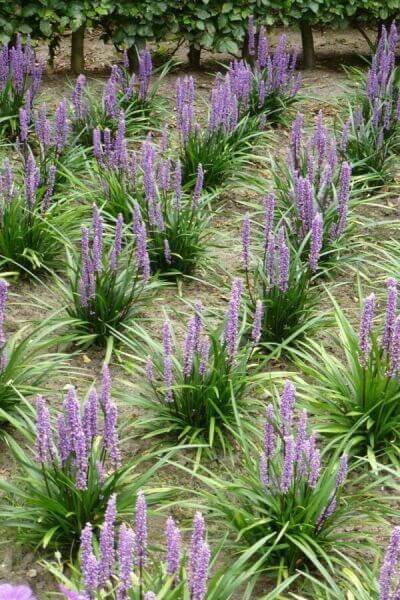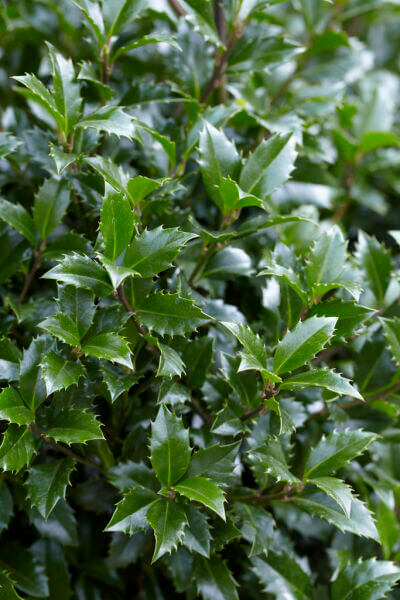Hedging Plants For Mediterranean Gardens
Hedging Plants For Mediterranean Gardens
Blog Article
Hedge Plants For Container Gardening
Enhance your garden's attraction with lavish hedge varieties such as Yew (Taxus), Thuja, Laurel, Photinia, and Bamboo, celebrated for their structural stability and ecological benefits.
Yew and Thuja provide evergreen protection and winter durability, while Laurel offers fast development and broad, aromatic leaves.
Photinia includes seasonal charm with its vibrant red foliage, and Bamboo provides a low-maintenance, serene atmosphere.
These hedges improve air quality, reduce sound, and create tranquil, personal areas.
Correct planting, spacing, and maintenance make sure vigorous development and environmental harmony.
Explore how these rich ranges can raise your garden's beauty and well-being.
Key Takeaways
Change Your Garden With Lush Hedge Ranges
- Select Yew for its thick, evergreen growth and unrivaled longevity.
- Select Laurel for its quick development and broad leaves, ensuring quick privacy.
- Choose Photinia for its vibrant seasonal foliage, which turns a striking dark red.
- Use Bamboo for a low-maintenance, winter-hardy hedge with visual appeal.
- Area plants 2-3 per meter and prune frequently for optimum development and health.
Popular Hedge Plants
When changing a garden with lavish hedge varieties, it's important to consider popular hedge plants such as Yew, Thuja, Laurel, and Photinia due to their distinct qualities and benefits.
Yew (Taxus) is highly esteemed for its longevity and thick, green development, making it a prime option for sustaining landscapes.
Thuja is kept in mind for its evergreen foliage and robust winter season strength.
Photinia includes seasonal vibrancy with red leaves that darken with time, producing dynamic visual appeal.
Laurel offers rapid development and aromatic, broad leaves, perfect for fast personal privacy.
Furthermore, Bamboo is an outstanding choice for ambiance, offering a low-maintenance, winter-hardy alternative that boosts the garden's aesthetic with its stylish, swaying canes.
These selections deal with a range of horticultural needs and preferences.
Advantages of Garden Hedges
Garden hedges provide a wide variety of benefits, making them an important addition to any landscape. These natural barriers are cost-efficient to execute and provide significant wind defense, improving air circulation and adding to noise decrease. The dense foliage of hedges like Thuja and Beech ensures personal privacy by obstructing presence, producing a serene and remote environment.
Hedges likewise play an important function in microclimate policy, providing a steady environment that promotes plant development and lessens temperature level changes. Their intricate leaf structures filter contaminants, improving air quality and adding to a healthier garden environment.
Additionally, hedges master sound reduction, soaking up and deflecting sound waves to lower ambient sound levels. This double functionality of supplying both visual and acoustic personal privacy enhances the general tranquility and aesthetic appeal of any garden.
Planting and Upkeep Tips
For a successful hedge, precise preparation of the planting location is crucial. Guarantee the soil has correct pH and drainage to support strong root development.
Area the plants properly for the chosen species. Water the hedge often throughout its preliminary growth phase, changing as required with seasonal modifications.
Implement a methodical insect control and illness prevention strategy, using chemical or natural treatments when essential. Regularly inspect for aphids, mites, and fungal infections.
Apply mulch to keep wetness and reduce weeds. Seasonal pruning promotes thick development and air circulation, essential for plant health.
Following these guidelines will help you cultivate a dynamic, properly maintained hedge that boosts the beauty of your garden.
Spacing and Trimming Guidelines
Spacing and Trimming Guidelines
Proper spacing and trimming are essential for cultivating healthy, visually appealing hedges. Sufficient spacing makes sure each plant gets enough nutrients, light, and air flow.
Follow these standards for ideal hedge upkeep:
- Spacing: Position hedge plants 2-3 plants per meter to encourage robust growth.
- Pruning Techniques: Regular pruning is essential for keeping wanted hedge height and shape. Cut brand-new development in summertime and cut back older wood during winter season.
- Seasonal Care: Change cutting methods and schedules according to seasonal requirements to make sure plant health.
- Hedge Height: Regularly monitor and trim to preserve the preferred hedge height and achieve consistent aesthetic appeals.
Complying with these steps will ensure your hedge prospers, improving both the appeal and performance of your garden.
Choosing the Right Hedge
Choosing the Right Hedge
Choosing the proper hedge includes assessing aspects such as mature height, foliage density, and environmental durability. Effective hedge plant selection requires understanding each types' development attributes and site-specific versatility.
For example, Yew (Taxus) offers exceptional longevity and thick growth, while Thuja is significant for its winter season resilience. In addition, considering upkeep requirements is essential; fast-growing types like Laurel or Privet demand routine trimming, whereas low-maintenance alternatives like Bamboo or Ivy might be more effective for those seeking very little upkeep.
Ecological factors such as soil type, light accessibility, and wetness conditions ought to likewise guide the choice process. This cautious technique ensures the selected hedges will thrive, offering both functional and visual advantages to the garden landscape.
Delivery and Planting Suggestions
To ensure your hedge plants flourish, they need to be delivered by specialized couriers and planted immediately upon arrival.
Follow these essential steps for successful planting:
- Soil Preparation: Enrich the soil with raw material to enhance drainage and nutrient content.
- Planting Depth: Produce a trench twice the width and equal to the depth of the root ball.
- Watering Methods: Water completely after planting, keeping the soil consistently moist but not filled.
- Mulching: Use a layer of mulch to maintain moisture and suppress weeds.
Customer Support and Service
Provided the important function of prompt assistance in horticultural pursuits, our customer support team is offered 6 days a week through telephone, email, and social media to provide skilled advice and swiftly deal with any concerns. Their commitment to quick reaction times guarantees client fulfillment by solving questions connected to plant health, optimum planting approaches, and upkeep schedules.

Interaction Method
-------------------
Email
This detailed support group, enhanced by a stellar 9.3/ 10 customer rating, highlights our commitment to improving the gardening experience for each customer.
Regularly Asked Concerns
The Length Of Time Does It Consider Hedge Plants to Develop?
Hedge plants usually need one to 3 years to end up being totally developed, with the specific period differing by types and growing conditions.
Effective care during this crucial period is important for robust growth. Consistent watering, vigilant weed control, and appropriate fertilizer application are essential in promoting strong root advancement.
For instance, fast-growing species like Laurel may establish quicker, while slower-growing ranges such as Yew may take longer. Thorough maintenance accelerates the establishment procedure, leading to healthy and dense hedges.
What Are the very best Hedge Plants for Personal Privacy?
The concern of the very best hedge plants for privacy includes evaluating evergreen and deciduous alternatives.
Evergreen hedges like Thuja, Laurel, and Cypress provide year-round coverage, making sure constant personal privacy.
In contrast, deciduous hedges such as Beech offer seasonal personal privacy, shedding leaves in chillier months.
Key maintenance ideas for privacy hedges include regular trimming, fertilizing in spring, and proper spacing-- generally 2 to 3 plants per meter.
Furthermore, consistent watering and diligent weed removal are crucial for promoting healthy, dense development.
Can Hedge Plants Bring In Wildlife to My Garden?
Yes, hedge plants can draw in wildlife to your garden by offering important benefits like shelter, food, and nesting sites, thus improving local biodiversity. For circumstances, yew, holly, and laurel are excellent for attracting birds, while ivy supports a variety of pests.
However, it's important to note that there are some downsides, such as increased upkeep to manage pests and routine maintenance. Thoroughly selecting and keeping hedge ranges can help stabilize these advantages and disadvantages, ultimately fostering a sustainable and dynamic community in your garden.
Are There Any Blooming Hedge Plants Available?
Yes, there are flowering hedge plants offered that can enhance the appeal of your garden.
For example, Elaeagnus, also called Olive Willow, produces fragrant white flowers in the fall, including a touch of beauty.
Photinia, another popular option, showcases dynamic red leaves that grow into a rich green, developing a dynamic visual result throughout the seasons.
To guarantee these plants flourish, it's vital to practice appropriate pruning strategies and seasonal upkeep, such as trimming brand-new development in the summertime and cutting down in the winter season.
These steps will help preserve the health and visual appeal of your flowering hedges.
How Do I Avoid Pests in My Hedge Plants?
To avoid more info bugs in hedge plants, employ natural insect control methods and preserve correct hedge care. Introduce advantageous pests like ladybugs, which prey on harmful insects, to develop a balanced community.
Regularly examine your hedges for indications of infestation and without delay get rid of any affected parts to avoid the spread. Ensure the health of your hedges by applying balanced fertilizers and offering sufficient water.
Make use of mulching to keep soil wetness and proper spacing to decrease plant stress and promote robust development. These practices jointly help in lessening insect concerns and keeping a healthy hedge.
Conclusion
In essence, picking the ideal hedge ranges such as Yew, Thuja, and Laurel can change any garden into a serene sanctuary. These plants offer year-round plant, improve aesthetic appeal, and offer useful advantages like sound decrease and wind security.
Proper planting techniques, precise spacing, constant watering, and seasonal trimming are important for ideal growth.
Reputable delivery services and expert consumer assistance ensure a smooth experience from purchase to planting, making it easier than ever to elevate your outdoor area.
Garden hedges provide a wide variety of benefits, making them an important addition to any landscape. These natural barriers are cost-efficient to execute and provide substantial wind security, enhancing air blood circulation and contributing to noise decrease. The dense foliage of hedges like Thuja and Beech makes sure personal privacy by obstructing exposure, creating a tranquil and secluded environment.

Pruning Techniques: Regular pruning is essential for maintaining desired hedge height and shape. Cut brand-new development in summertime and cut back older wood during winter.
Report this page